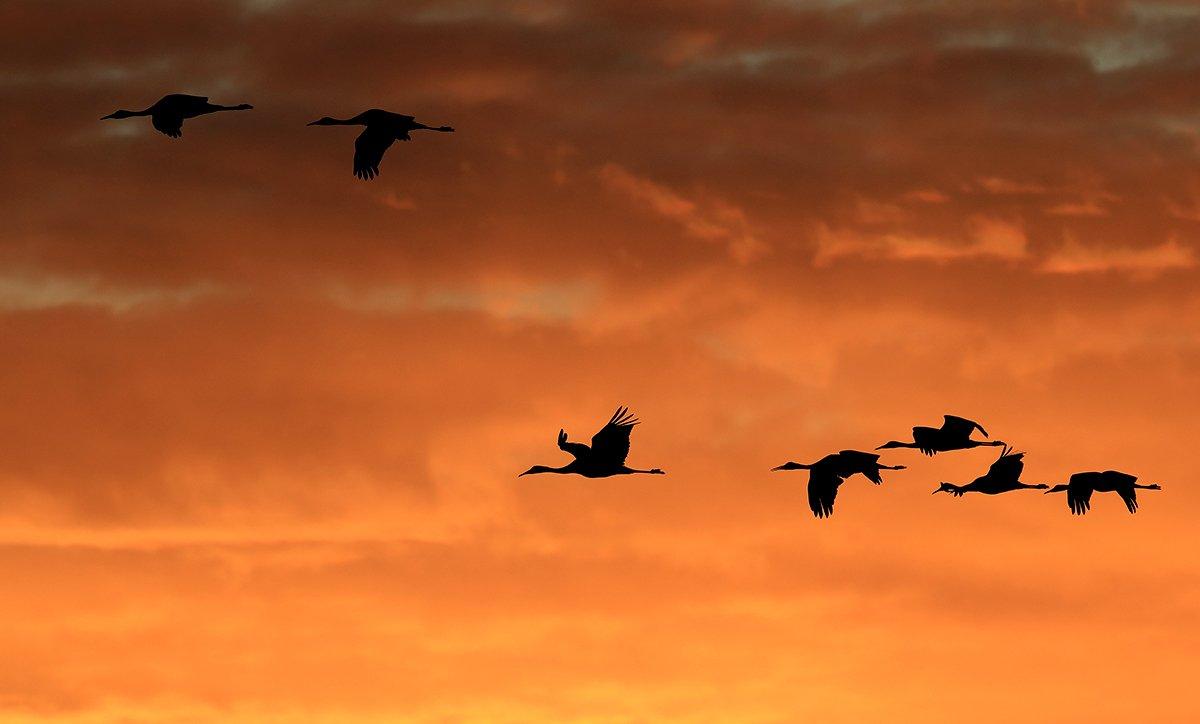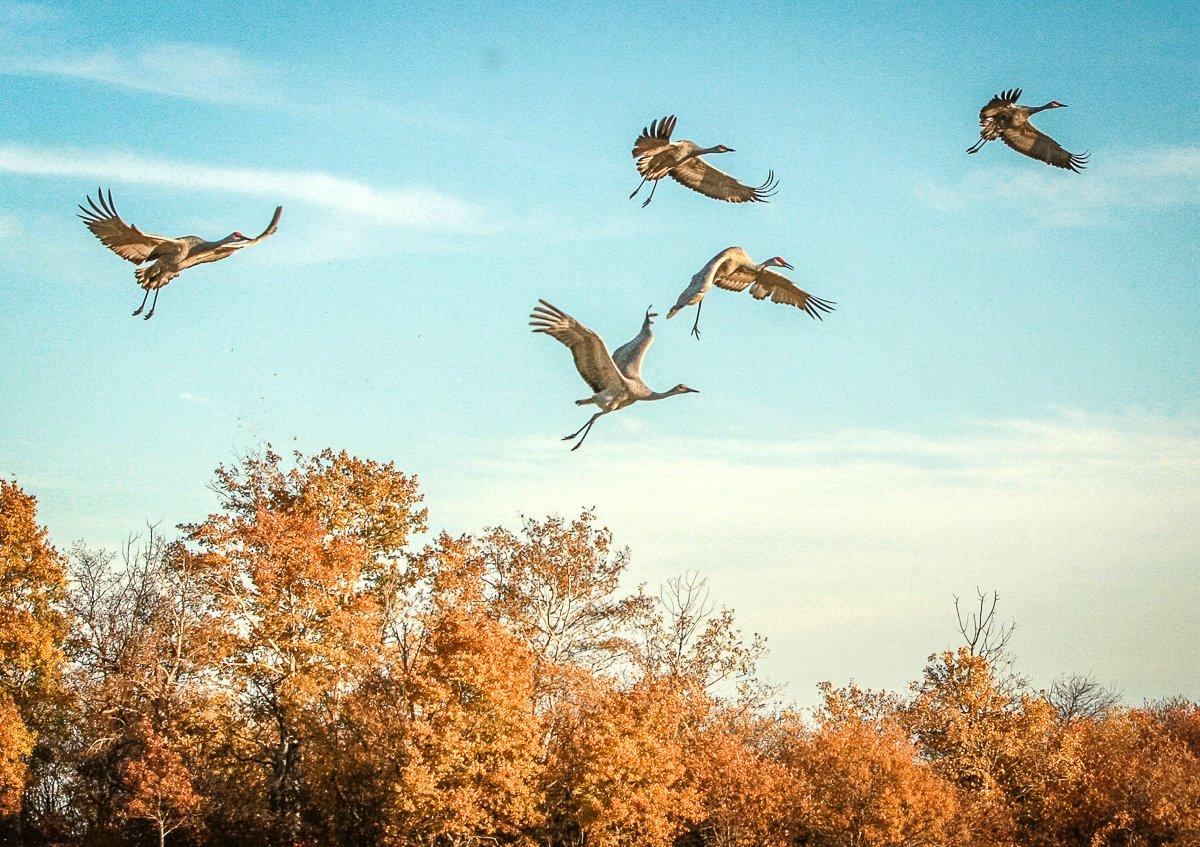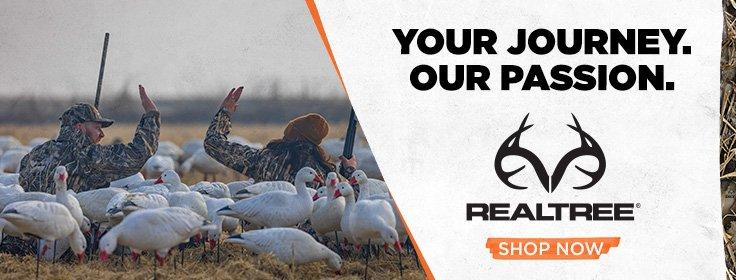Images of giant, sharp-billed birds descending amid trumpet-like calls might seem more like a deleted scene from Jurassic Park instead of a waterfowl hunt.
Yet across many areas of North America, that scene plays out year after year, as a small but dedicated group of hunters pursues a unique bird: the sandhill crane.
Depending on where you live, you’ve probably seen sandhills; tall, long-legged, long-necked birds with red foreheads, gray-brown plumage and dark, pronounced bills. They’re common to abundant in many parts of North America, with a total population (six subspecies) of more than 650,000, and sometimes migrate in huge, swirling flocks, often mixing with geese or ducks to feed in fields. However, few people realize the extent of crane hunting opportunities in North America, and even fewer know how to pursue these trophy birds.
That’s where experts like Tony Vandemore come in. As co-owner of Habitat Flats and Habitat Flats-Central Prairie lodges, Vandemore started guiding for sandhills in Saskatchewan during Fall 2015, and he said the crane game offers a unique challenge.
They are a huge bird and almost look prehistoric, he said. Watching them come in, they can maple-leaf just like a more-agile duck. They are really neat to watch decoy.
Here’s how to get started with crane hunting.
Scouting, Setup
Cranes typically roost in bogs, wet meadows, shallow marshes or similar areas but love to feed in harvested agricultural fields. Therefore, hunting them is similar to dry-land hunts for other waterfowl.
It’s a much like a duck or a goose, Vandemore said. It has to come off the roost to feed. Any bird moving about to feed is vulnerable to hunting.
Of course, you can’t simply pick a field and expect to start shooting cranes. Finding preferred feeding areas is critical.
As with ducks and geese, being in the right spot makes it a lot easier for successful hunts, Vandemore said. Scouting is the name of the game when hunting dry fields. Cranes tend to fly low and really string out in the same lines off the roost, so running traffic by getting in their path can (let you) be successful as well, but being on the X makes it a lot easier.
That usually involves lots of windshield time, looking for birds in fields or the air. After you locate concentrations of cranes in a huntable area, you must form a game plan to take advantage. Again, that’s very similar to goose or duck hunting, but cranes require special considerations. Vandemore uses ultra-realistic full-body crane decoys, usually in spreads of three- to six-dozen blocks. And concealment — always critical in field hunts — is especially important with sharp-eyed cranes.
Cranes have incredible eyesight, so going the extra mile to brush up the blinds every day with natural vegetation was a must,” he said. “If you missed picking (a dead) one up that was on the back side of a wind row of grain, they would flare and quit coming in, because cranes aren’t lying on the ground in the field, they’re standing up while feeding. That goes to show how smart they are and how good their eyesight is.
Special Concerns, Rewards
Vandemore said he and his clients usually shoot 3-inch loads of No. 2 steel, which he described as plenty of medicine for cranes. Sandhills are large and have huge wingspans, but they also have long necks, which helps make them relatively easy to bring down.
However, hunters — especially those using dogs — should be careful when retrieving downed birds.
Cranes can be extremely mean when wounded, Vandemore said. With a big, long beak, they will try to peck at a dog’s eyes or the hand of a hunter who’s trying to grab them. When you get the neck secured, they have three claws on each foot. The first thing that comes up is their feet, trying to claw a dog or a hunter’s forearm. For that reason, I would run my dog only on cranes that were clearly dead. I always made sure to run an e-collar just in case my dog would try to veer toward a wounded one instead, and would blow off a sit whistle.
After a successful hunt, though, the rewards become apparent. Hunters will have taken what might be a bucket-list bird and perhaps one of the finest-tasting waterfowl species.
They go by the nickname ‘ribeye of the sky,’ honestly, Vandemore said. They’re extremely fine table fare; lean, tender and grain fed.”
Conclusion
Crane hunting might seem somewhat involved, but Vandemore stressed that anyone can do it.
Like I mentioned, they have to go from the roost to feed just like a duck or goose does, he said. Scouting is the same, and hunting is more or less the same. Get where they want to be, put out some crane decoys and make sure you’re 100 percent hidden.
Or, if you want to experience a once-in-a-lifetime hunt, contact habitatflats.com or Cooper Olmstead at (515) 835-2223) about a Saskatchewan sandhill outing.
The best part of hunting them in Canada is the variety, Vandemore said. Cranes will feed with ducks, and you will see them with Canada geese. It’s another opportunity to add to the bountiful Canadian prairie mixed bag.
Wherever you pursue them, sandhill cranes provide a unique opportunity for one of the world’s most distinct birds. Waterfowlers thrive on varied experiences, after all, and a crane hunt might sit atop anyone’s life list.
(Buy alert: Men’s Max-5 Camo Cedar Branch Insulated Waterproof Bibs)
Click here for more Realtree waterfowl hunting content. And check us out on Facebook.










